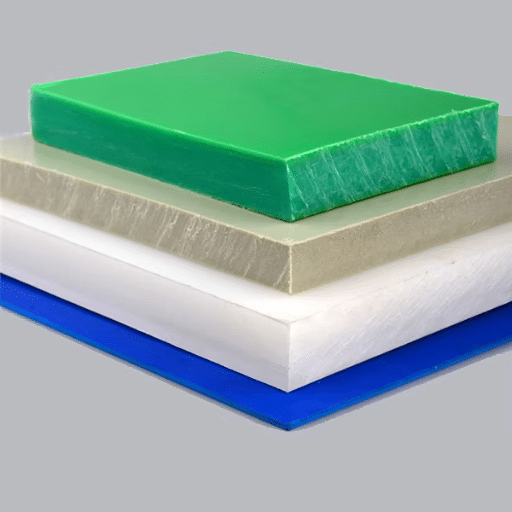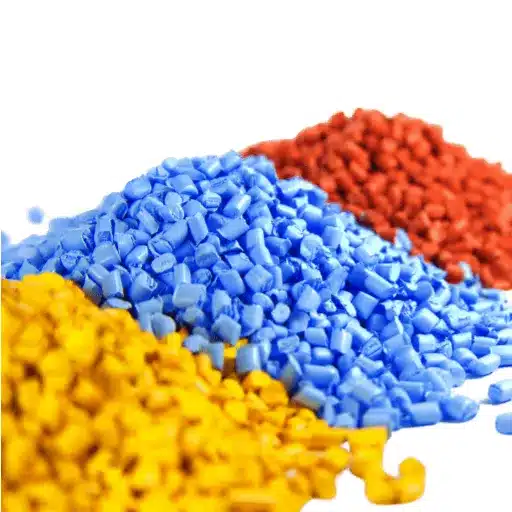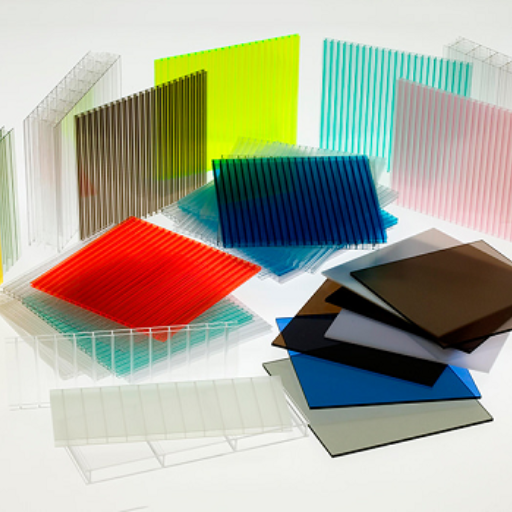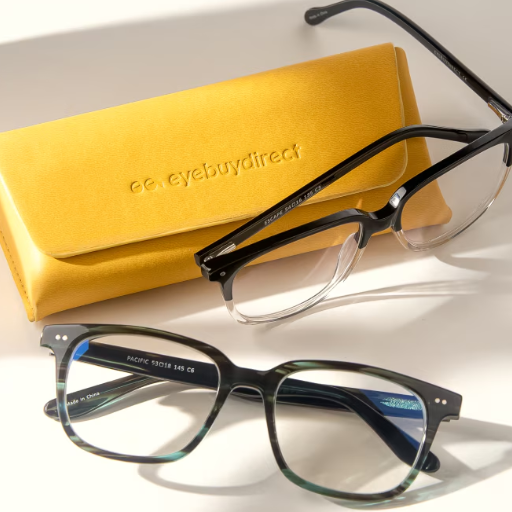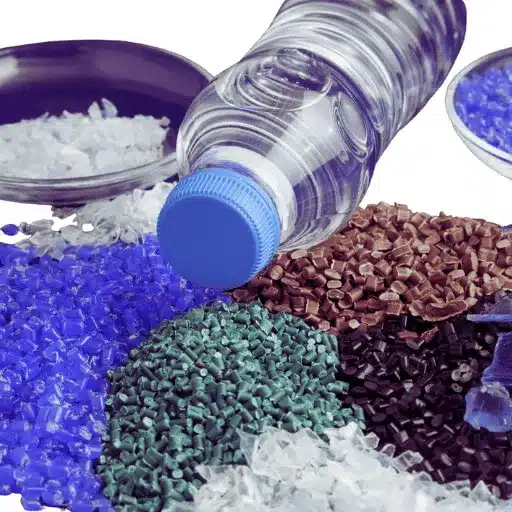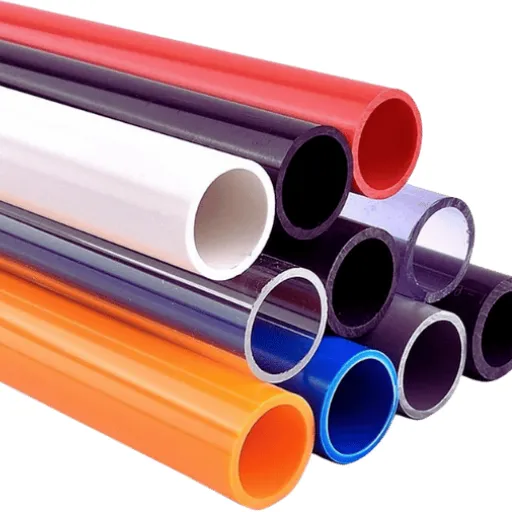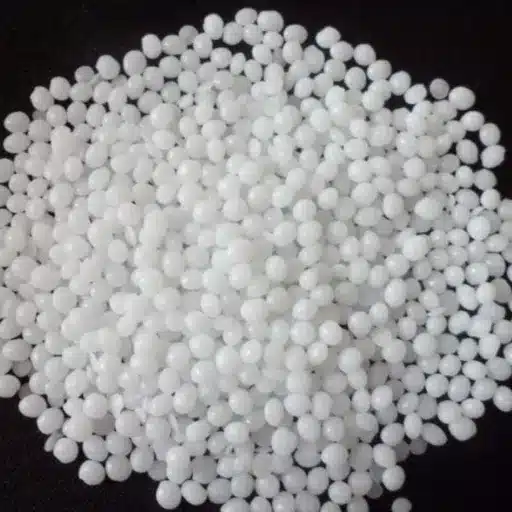Altering the appearance of ABS parts with paint includes a certain level of attention to detail. The polymer called ABS (Acrylonitrile Butadiene Styrene) is a thermoplastic of superior strength and functionality. This plastic is very common in the making of various vehicle components, consumer electronics, and home appliance parts for its amazing properties. This, however, also poses a problem since it makes painting more complicated due to the fact that the lists of propensity are prepared. This manual aims to provide steps on how to paint carefully, starting from removing dust on the surface to applying the correct paint and techniques at the correct level. Whether you are replacing an old and withering object or implementing a new one, this chapter will give you the requisite information to facilitate the task and help you to come out with a good job that will last long.
Understanding ABS Plastic and Its Characteristics
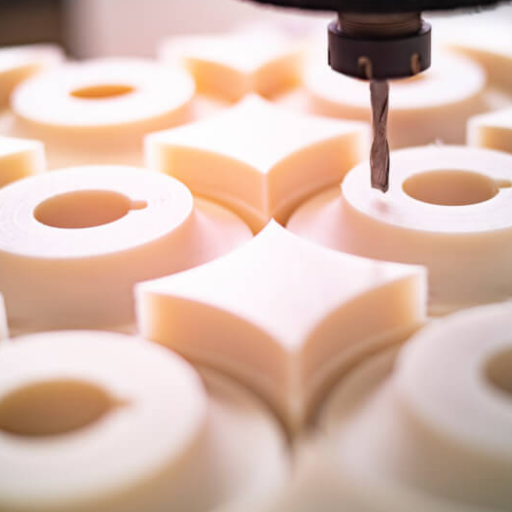
One type of thermoplastic resin that has proven itself over the years to be both tough and light in weight is Acrylonitrile Butadiene Styrene (ABS). This particular polymer possesses certain levels of tensile strength and impact resistance as well as of flexibility, resulting in its being used in the automotive industry as well as other such industries which deal with consumer goods. ABS itself is highly resistant to various external factors such as moisture and chemicals among other impediments except for its sensitivity to ultraviolet rays that could cause its breakdown if not too architectural, without suitable treatments over time. Achieving the precise sharp edge in machining or cutting this material is also quite easier because of its properties. It has no pores, which does not make the surface only sleek, even without any painting or finishing works people will do, such as cleaning and priming prior to the painting or finishing, etc.
What is ABS Plastic?
Commonly referred to as ABS, Acrylonitrile Butadiene Styrene is a type of plastic that is manufactured in a way that it is tough, possesses great strength, and is able to resist the impact of other objects hitting its surface. The three main monomers used in the manufacture of ABS are Acrylonitrile, Butadiene, and Styrene, hence a balance of strength, heat resistance, and the ability to process is experienced. Acrylonitrile gives the polymer chemical resistance abilities and high thermal stability, butadiene increases the impact resistance and the toughness of the plastic, whereas styrene enhances the formability and dimensional stability of the final product.
However, ABS is incredibly elastic in nature and lends itself for wider usage as mater than most other materials. One particular area where it finds application is the manufacture of vehicle parts, although other uses would include electronic enclosures, making of 3-D tools, as well as many other goods and consumer materials, as it is very light, tough, and cost-effective. It is very common in that it is capable of working within temperatures that range from -20°C (-4°F) to 80°C (176°F) under most conditions of use, and as a result, this type of material is preferred for both low temperatures and high temperatures.
Properties of ABS Plastic
- Mechanical Strength: One key advantage of Acrylonitrile Butadiene Styrene is its high resistance to shocks and toughness at low temperatures. Although this plastic’s tensile strength is however low, 4,300 to 6,000 psi (30-41 MPa), many structural products are made from it due to the good impact strength.
- Thermal Properties: ABS is an engineering material and exhibits a glass transition temperature (Tg) at 221°F (105°C). Although its continuous operating temperature ranges from -4°F (-20°C) to 176°F (80°C), it can possibly be enhanced to elevated temperature devices by means of modifying the polymer to higher temperature grades.
- Chemical Resistance: The versatility of ABS copolymer in respect of chemical attack is good; it normally stands up to many chemicals such as acids, alkalis and even some oils without being corroded. However, the evil natures of solvents like ketones and esters are able to attack and degrade the polymer quickly.
- Electrical Insulation: It possesses very good thermal insulating properties, a feature that makes it very befitting for polishing abreast of curing in electrical components and electronic packages.
- UV Resistance: Standard ABS has limited resistance to UV light, but UV-stabilized grades are available for outdoor applications to reduce degradation under sunlight.
- Flammability: As we would anticipate, any or virtually all ABT may burn when exposed to an external flame; however, combinations with fire retardants can always be designed to meet flame-resistant industry-required standards, as represented by UL94 HB or V-0 and related ratings.
Common Applications of ABS Plastic
- Automotive Industry: Capacity and strength in variations of design are the major factors behind the extensive usage of ABS in making automotive parts both interior and exterior. These include dashboards, inner and external door panels, trim cover of the B-pillar, and grills, among others. It is estimated that automotive-related consumption of the APS accounts for about 12% of the total demand.
- Electronics and Electrical Components: The Attitude control of ABS makes it an ultimate go to material for making electronic cabinets and other enclosures such as TV sets, remote, and computer case among others. ABS is normally compounded with flame retardants/and or is made in such a way as to meet special protection requirements like UL94 V-0 for use in electronics.
- Consumer Goods: In terms of consumer goods, ABS is most common in different household and daily usage articles because of its properties – it has a high impact resistance and good aesthetic qualities. Among the examples are the kitchen equipment, vacuum cleaners, toys (the famous LEGO bricks also use this material) since it is not fragil and suitcases, etc. The toy industry as a separate kind of production is one of the biggest consumers of ABS, and LEGO produces annually over 60 billion components from this reinforcement effect.
- 3D Printing: Additive manufacturing is technology and method where 3D objects are created from digital files. One can buy fully functional 3d Printers such as Ultimaker, Prusa, etc. 3-Dimensional printing is the layman’s term. It is based on the principles of Mashup manufacturing. These individual machines use metal powders such as stainless steel, which are used in Arcam production.
- Medical Equipment: Primarily Acrylonitrile Butadiene Styrene (ABS) tends to be the perfect choice for the medical equipment since it possesses great toughness, resistant of sterilization as well as chemicals and resistance to cleaning agents. Some of the common examples include instrument panels, trays, and casing in diagnostic equipment.
- Construction Materials: Another key area of application of ABS is in the construction area whereby products such as pipe systems, showerheads, or wall panels may be in use. Its durability and resistance to humidity make it a great addition in such areas of potential harm.
Preparing ABS Plastic for Painting

- Clean the Surface
The plastic should be washed with warm soapy water to clear it of all dirt, oils, etc that make it dirty. Remember to rinse as well as dry it to ultimate perfection.
- Sand the Plastic
Take a smooth scuff pad such as 400 to 600 grit sandpaper to the surface to introduce a slight roughness. This aids the effectiveness of the paint and adhesion onto the plastic.
- Wipe with a Cleaner
Take a clean cloth and swipe over the area with the sand on an isopropyl alcohol solution to remove dust and oily matter. The surface must be devoid of moisture for efficient results.
- Apply Plastic Primer
A coat of primer should be sprayed because this is a non-standard surface: uncontaminated plastic shrink wrappings. I should be applied evenly and let to dry as per the product’s directions. This gives you a better lifespan of the panel.
- Paint the Surface
Priming Techniques for ABS Plastic
Putting too much credence in the idea that adhesion is only dependent on the great quality of the coatings is quite wrong, as formulations dub priming comprises a strategy for the surface adhesive of ABS plastic. The first step is to get a primer that is made explicitly for plastic substrates and other coatings. Epoxy or acrylic are the most common types of primers due to their superior adsorbent ability and durability prior to the majority of essential uses of ABS. Always confirm the elimination of contaminants on the surface so that no such substance will interfere with the adhesion process during the application of priming.
The application must be even; therefore, a spray or aerosol primer can be used instead of a brush because it allows the primer to be applied evenly, and maintain a square distance between the nozzle and the surface of the area. Avoid excessive spraying; it is advised that light coats be applied to prevent sagging and mottling, which can appear when the paint is subject to air drying. Drying time in between primer coats, say, will be about 15 or 30 minutes, or will be this period, which is shown from the company’s descriptions, taking into the account temperature and humidity.
When it comes to high-precision applications, it is advisable to use a high-grit sandpaper to sand the surface slightly, between primer applications (fine sandpaper ranging from 400 to 600). This process helps remove any minor imperfections and helps the following layer to bond well. Regardless of the primer and the ABS plastic in use, always check the manufacturer’s recommendations as concerns compatibility requirements and have sufficient information for the third step of the process for the finished body.
Importance of Surface Preparation
The preparation of the surface involves numerous activities that are basic to ensuring the efficiency, appearance, and service life of a finished product. One can appreciate this by realizing that certain surfaces that are ill-prepared are inclined to adhesion issues like peeling, or cracking of coatings. This is due to the fact that impurities like dirt, oils, and oxidation form a barrier between the loaded material and the base material that hinders the two from perfectly contacting each other, which leads to weakening the bond and the longevity aspect of performance.
In the case of ABS plastic specifically, the smoothness of the surface significantly affects the interfacial adhesion properties when applied finishes such as coatings. Techniques of micro-abrasion combined with cleaning of the material will increase its surface energy attracting primers or glues for an improved interfacial adhesion. This issue is especially vital in situations where there is a lot of pressure, for instance in applications concerning moving metal parts in machines, as well as automotive, and oil and gas industries where the protective coating is exposed to corrosive environment round the clock. Careful preparation of the material not only helps to avoid complaints but ensures that further maintenance or costly repairs are not expected. Therefore, proper planning will eliminate additional investments in production and resources, and provide an efficient solution for the improvement of the product or part and control over it.
Choosing the Right Paint for ABS Plastic

Types of Paint Compatible with ABS Plastic
|
Type of Paint |
Key Features |
Parameters to Note |
|---|---|---|
|
Acrylic Paint |
Durable, fast-drying, flexible finish |
Ensure plastic-compatible and priming required |
|
Enamel Paint |
Hard, glossy finish, weather-resistant |
Suitable for outdoor use; longer drying time |
|
Spray Paint |
Easy application, even coating |
Use plastic-specific spray for better adhesion |
|
Epoxy Paint |
High durability, chemical resistance |
Ideal for industrial or heavy-use applications |
|
Plastic-Specific Paint |
Pre-formulated for plastic adhesion |
No primer required; follow manufacturer instructions |
|
Polyurethane Paint |
Resists abrasion and UV degradation |
Best for long-term outdoor exposure |
|
Latex Paint |
Water-based, easy to clean up |
May need a primer for ABS surfaces |
Recommended Brands and Finishes
The right kind of paint to use in an attempt to submit visual arts on thickness recurtec computer panels starts with certain brands and finishes. Everyone equally appreciates Krylon Fusion for plastic, which is the best quality paint that adheres to the plastic brilliantly and doesn’t require any primer coating it first. When talking about good quality Paints for plastic, Rust-Oleum specialty plastic primer spray is also effective in this case due to its properties as it serves as a base coat for many plastic paints without having flaws. In extreme or heavy-duty operation circumstances, Sherwin-Williams DMT epoxy mastic is the best option thanks to the variety of colours to range the long-lasting chemical resistance offered.
Satin and semi-gloss finishes are preferred for interior decor purposes because they provide a blend of style and functionality. These coatings work as an intermediary and offer a light matt-effect that gives an appropriate finish to the surface and offers satisfactory resistance against scratches and wear. For semi-gloss finishes, however, the level of light reflection is slightly enhanced hence ideal for surfaces more likely to have contact with dust, liquid among other contaminants. Such surfaces are found to be easier to clean. For enduring and closer to perfect outcomes, it is always specifically advised that you read and understand the manufacturer’s guidelines and technical datasheets for good functioning with ABS materials.
Spray vs. Brush: Which is Better?
Sometimes spraying has hits over brush, and other times brush has the upper hand, although the weight of priority may still lie more in spraying. To begin with, spray has advantages as one can obtain a smooth and almost professional finish, especially for large-scale and complex backgrounds. Difficulty in achieving uniform finish with brush technique is completely ruled out here as each part of the surface gets application with a guarantee of not having unsightly lines. The use of a spray is also very efficient in circumstances where fast completion of a task is needed, irrespective of the decorative materials used. More so, advanced spray methods are suitable for example, expanding resin castings tools, containing fine detail- easy to reach parts to others with distressed finishes, uniformly without an excessive lack of details made by the sprayer.
However, brushes still offer the best option for applying paint on relatively smaller, and uniquely shaped surfaces since they do not have the size limitations. Furthermore, brushes provide flexible techniques for application, which include but are not limited to stippling, etc, or even stacking, which allows for the achievement of different textures. Although such a technique is time-consuming, it has the advantage of being less messy, as the walls do not require masking, even when LIBs take over from SBs, in terms of material loss.
At the end of the day, which one you pick will depend on what the job requires, with each having its advantages based on the situation and the desired results. Optimal efficiency and some interior finishes can be achieved using hybrid methods, which are the combination of both spray and brush application. This is helpful especially for complicated tasks.
Step-by-Step Guide to Painting ABS Plastic
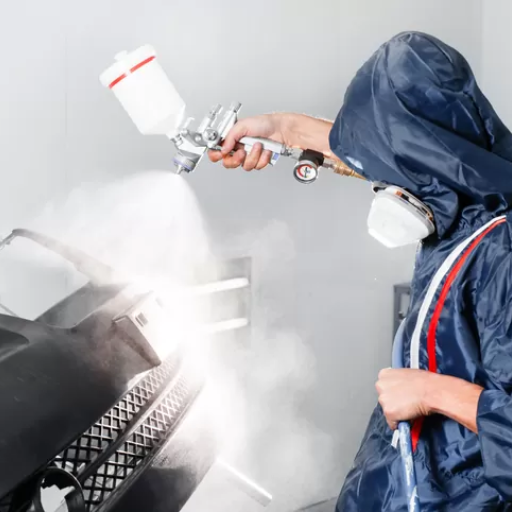
- Clean the Surface
Begin by cleaning the ABS plastic thoroughly to remove dust, dirt, and grease. Use warm soapy water or a plastic-safe cleaner, and ensure the surface is completely dry before proceeding.
- Sand the Plastic
How to get rid of the influence and debris on the surface easily? It is as simple as sanding the surface with 220-400 grit sandpaper to make the surface rough and patchy. After that, wipe the surface with a white cloth to bring out the feel.
- Apply a Plastic Primer
Pick a plastic primer from the shelf. Lay on a light even layer and allow it to dry according to the instructions, which is done to bond the topcoat to the surface.
- Paint the Surface
Acquire paint that suits plastic materials. Its application should be in one or two light coating periods followed by an appropriate drying time between them therefore avoids the risk of runs and ensures a good surface quality.
- Seal for Durability
Gathering Necessary Tools and Materials
If the project under consideration is painting and decorating, it is vital to use specifically designed tools in addition to the materials. The first tools to use would be the basic ones, such as a good quality acrylic industrial-grade plastic primer, which helps in the adhesion of the paint on the surface of the plastic. And without it you will smear the paint. The recommended steps to take are priming with any primer available, and there you go, the plastic is scraped. Moreover, select the type of paint: aerosol or brush-applied so it can be problem-free as far as the plastic is available. Apart from the primer coat and the paint over it, a mild degreaser or warm soap water is a must for cleaning the substrate before paint, while light to moderate dust or fingerprints may ruin the result. You are then supposed to use the microfiber towels again, or the lint-free cloths to wipe the surface perfectly dry. To make it easier for you, ensure that you have the painter’s tape to put along the areas that you want to paint, while the drop cloths or any other type of covering is meant to control where the paint runs. And last of all, include a protective coating that is water-based when cutting, since it will increase the lifespan of the finish and the surface will be smoothed.
Application Techniques for a Smooth Finish
Acquiring an even finish calls for the use of dexterity and thoroughness in the course of painting. The first step in achieving this milestone is to carefully select an appropriate primer which is able to provide good adhesion to the base as well as not allowing any uneven absorption of paint. While painting, utilize several devices e.g. foam rollers if dealing with broad areas, as well as angled brushes for awkward spaces or edges, so as to avoid paint splashes on adjoining surfaces. It is necessary to roll the paint to the surface in light, thin layers and give each a complete drying time as per the instructions furnished by the manufacturer.
When applying paint, it is advisable to work in the same direction – do not mash left and right with the brush, as well as consistently press the brush or roller against the surface. In the case of plastic or metal products, swelling can be eliminated by using a paint conditioner. Use airbrushing-capable nozzles for broad, uniform patterns when airbrushing, and adjust air pressure and nozzles accordingly. Afterward, gently abrade the surface with fine abrasive (one with 320-400 grit) so as to level any small defects or imperfect joins then vacuum the place to get rid of any dust that might impede the application of the following coat. Provided that these techniques are observed and perfection is pursued, a finish better than that which is general yet sold will be achievable, one that is attractive and resistant.
Drying and Curing Times
Coating materials are such that they possess different drying and curing times depending on the material used, environmental conditions, and the contents of the specific product. In most instances, condition of the coat is such that even by the time it is done with the first layer of application, it is said to be dry on the side exposed to atmosphere i.e. ‘tack free’ in approximately 15 minutes to several hours due to the nature of the binder and external variables such as temperature and humidity. It must be appreciated that while surface drying touches on the drying of the coat, further mention is made of full curing as a more persistent condition which ensures that the coat hardens completely. However, especially in the case of protective coatings, curing is not even the completion of such hardening, but a process through which the coating attains the potential to perform at optimal levels. This implies that, for example, water-based coatings will generally cure in the 7-14 day range whereas solvent-based coatings will take as long as thirty days to completely cure. Depending on the coating material, curing occurs most efficiently in an environment involving good air circulation with a temperature of approximately 70°F and relative humidity controlled to a level similar to 50%. An important point to bear in mind is to recoat windows and avoid recoating previous layers before the times stipulated, or the longer the better.
Common Mistakes to Avoid When Painting ABS Plastic
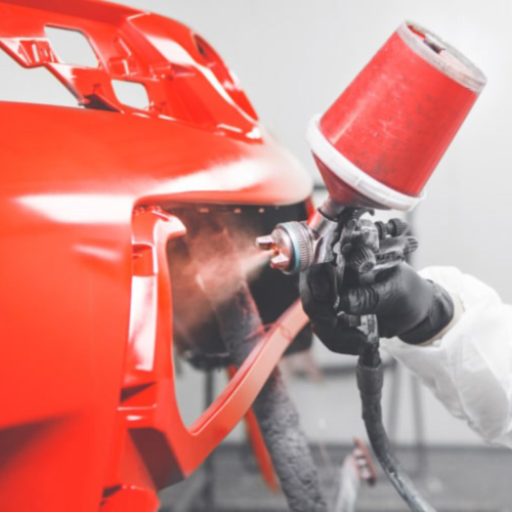
- Skipping Surface Preparation
Inadequate cleaning and sanding of a material surface can pose difficulties in terms of paintwork. It should be ensured that any surface contaminants, as well as abrasive grease and dust, are removed, and the plastic’s surface is slightly sanded in order to roughen the surface of the material.
- Neglecting Primer Application
Painting ABS ( Acrylonitrile Butadiene Styrene ) is also said to peel or flake if painted without a primer that is compatible with the surface layer. Since normal primers will not adhere to polypropylene well, a plastic primer should be applied that will bond well to the base.
- Using the Wrong Type of Paint
Additionally, selecting general paint instead of materials specifically designed for plastic parts can result in brittleness of the film or excessive transparency over the substrate. Confirm whether the finish coat will stick on ABS plastic and obey the paint system under the contract.
- Ignoring Proper Curing Times
For example, the final layer may be applied too early or the painted surface may be handled before it is ready, which will result in insufficient strength of paint. Do not bridge over and look out for the correct drying and curing times of both primers and paints and the applications in question.
- Overlooking Environmental Conditions
Poor Surface Preparation
One of the most critical steps in ensuring that paint adheres well is ensuring that the surfaces being painted are properly prepared. Neglecting to clean the surface where the paint is to be applied results in foreign materials such as dirt, oil, or old paint that has peeled off, which would hinder the product from adhering to such a surface. In the same manner, if the sanding process is omitted or the surfaces that need to be painted are incompletely smoothed, then it is possible that the paint coat will ultimately turn out wavy and rough with some areas blistering and peeling with time. In other words, the research asserts that the presence of any such remnants or irregularities in the paint causes a 50% rise in the defect limit in the first year of the coating. Some reported instances of imperfections are the use of the wrong primers or a complete lack of the interfacial layer, which weakens the bond strength of the coating to the surface greatly. Such clearly defined measures serve as a risk mitigation strategy for many, not-so-nifty dustups in decor finishing and ornamental design campaigns, including cleaning, sanding, and priming.
Using Incompatible Paints
It is clear from the citation that when the wrong type of paint is chosen, the paintwork may lose its integrity and service life. Various brands as well as types of paints are developed to suit specific bases, weather conditions, components, and other reasons, which also include whether they are in direct contact with sunlight, the amount of humidity in the environment, variations in temperature, and many others. For instance, if a surface that is continually moist is coated with oil-based paint, chances are high that the paint will blister or peel off because oil paint has less effective waterproofing capabilities than latex-based paint. Still, even the presence of distinct chemical characteristics between the paint layers is dangerous. This is when it becomes obligatory to know and adhere to the manufacturer’s recommendations for each product component to prevent frequent do-overs and sustain effectiveness.
Skipping the Primer
Primer, which can be defined as a surface preparation surface coating that primarily aims at providing an interface between the substrate and the topcoat, is a very crucial element in painting. By overlooking this important requirement, a number of performance hindrances may come up. Surfaces painted with paint can be applied as a topcoat without primer, usually resulting in poor texture, interpenetrating skin unit, or flaky paint, if someone selects these thin materials. This is visible especially in the presence of porous materials such as natural wood and uncoated plaster board, in which the paint is soaked in less than the clearance required, covering more areas and consuming more paint than it allows for.
Reference Sources
-
How to Paint ABS Parts|KOTOBUKIYA
- This guide emphasizes the importance of cleaning ABS parts by soaking them in water with neutral detergent to remove oils. It provides detailed steps for surface preparation and priming to ensure a smooth and durable paint finish.
-
How to Spray Paint a Fiberglass or ABS Plastic
- This article offers a step-by-step approach to painting ABS plastic using aerosol spray paint. It highlights the importance of cleaning, priming, and applying multiple layers for a polished result.
Frequently Asked Questions (FAQs)
Q: How to prepare ABS plastic for painting?
A: Preparing ABS plastic for painting involves several important steps to ensure a successful paint job. First, clean the entire surface with a mixture of dishwashing soap and water to remove any grease or dirt. After cleaning, use a soft cloth to dry the surface thoroughly. Next, lightly sand the plastic with fine-grit sandpaper to create a smooth surface that enhances paint adhesion. Following this, apply an adhesion promoter specifically formulated to bond with plastics. This step is crucial for ensuring the paint will adhere properly and not peel off over time.
Q: What type of paint should I use to paint ABS plastic?
A: When painting ABS plastic, it’s essential to choose the right type of paint for optimal results. Automotive paint or specially formulated spray paint is recommended, as these types are designed to withstand the unique characteristics of plastic surfaces. Look for paints that indicate compatibility with plastics and offer good coverage. Additionally, using a paint and primer in one can save time and ensure a strong bond. Always follow the manufacturer’s instructions for the best results and to achieve a pristine finish.
Q: How many coats of paint do I need for ABS plastic?
A: The number of coats of paint required for ABS plastic can vary depending on the specific product and desired finish. Generally, applying at least two coats of paint is recommended for good coverage. After the initial coat dries, inspect the surface for any uneven areas or spots that need more coverage. If necessary, a third coat can be applied to achieve an even finish. It’s important to allow adequate drying time between coats, as suggested by the paint manufacturer, to ensure that each layer adheres properly.
Q: Can I use spray cans for painting ABS plastic?
A: Yes, using spray cans is a convenient method for painting ABS plastic. Spray paint allows for even application and can reach intricate areas that brushes may miss. When using spray cans, shake them thoroughly before application to mix the paint evenly. Hold the can at a distance to avoid overspray and ensure a smooth application. For larger surfaces, consider using a spray gun for a more controlled and professional-looking finish. Always remember to apply a clear coat after the paint dries to protect the surface and provide a glossy finish.
Q: What is the best way to ensure the paint adheres to ABS plastic?
A: To ensure paint adheres well to ABS plastic, proper preparation is key. Start by cleaning the surface to remove any debris or oils. Sanding the plastic lightly creates a rough texture for better adhesion. Applying an adhesion promoter is crucial, as it helps the paint bond effectively with the plastic. Additionally, using a primer designed for plastics before applying the final paint can significantly enhance adhesion. Always allow the primer to dry completely before applying the paint for optimal results.






